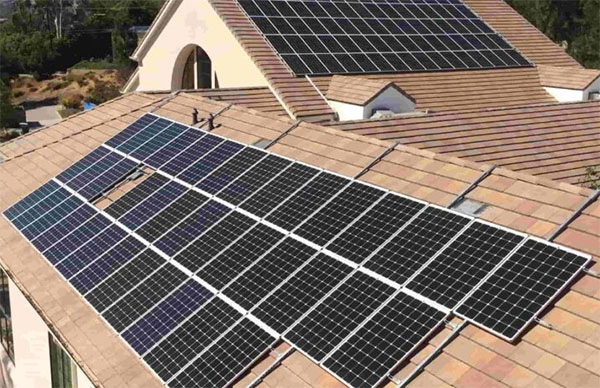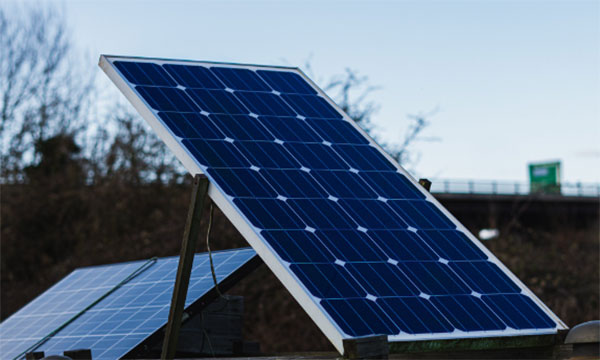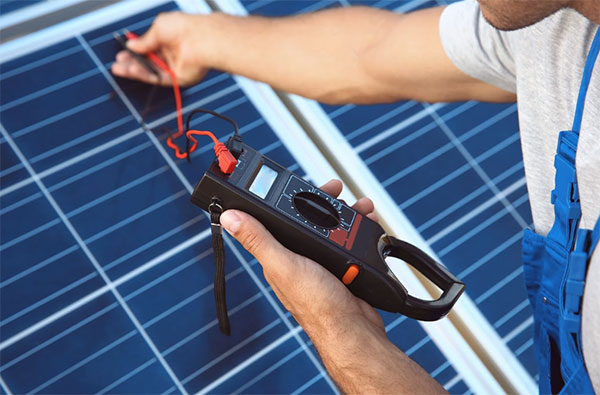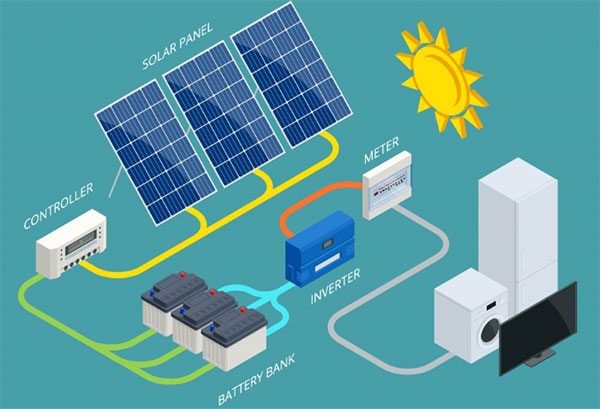
High Initial Installation Costs
Comparison with Traditional Roofing Costs
The cost of installing a solar roof is notably higher than that of traditional roofing materials. On average, a solar roof installation can cost between $20,000 to $40,000, depending on the size and type of the property. This is significantly higher than the $5,000 to $10,000 average cost for a conventional asphalt shingle roof on a similar-sized home. The high cost is due to the advanced technology used in
solar panels, which are integral to solar roofs.
Factors Influencing Solar Roof Pricing
Several key factors influence the pricing of solar roofs.
- Quality of Solar Panels: Higher efficiency panels, which convert sunlight to electricity more effectively, tend to be more expensive. The efficiency of a panel can vary from 15% to over 22%.
- Roof Size and Layout: Larger roofs require more panels, increasing the total cost. The complexity of the roof design also impacts installation costs. Roofs with multiple levels, dormers, or skylights require more custom work.
- Installation Labor: The labor cost for installing a solar roof can be significant, as it requires specialized skills and knowledge. It often represents about 10% to 15% of the total project cost.
- Additional Equipment: Besides panels, other components like inverters, which convert solar energy into usable electricity, and batteries for energy storage, add to the cost. A high-quality inverter can cost up to $2,000, and a home battery system can range from $7,000 to $14,000.
- Permits and Inspections: Obtaining the necessary permits and passing inspections can add to the total cost. This varies widely depending on local regulations and can range from a few hundred to several thousand dollars.
Overall, the initial investment in a solar roof is substantial, but it's offset by long-term savings on energy bills and potential government incentives for renewable energy use.
Weather-Dependent Efficiency
Solar energy production heavily relies on weather conditions, which can significantly impact the efficiency of solar power systems.
Impact of Cloudy and Rainy Conditions
Solar panels require sunlight to generate electricity, and their efficiency drops in cloudy or rainy weather. During overcast conditions, solar panels might only produce about 10% to 25% of their rated capacity. This reduction can be more pronounced in areas with frequent cloudy weather. Rain, while it can help clean the panels, further reduces their ability to capture sunlight. However, it's worth noting that solar panels can still generate power on cloudy days, albeit at a reduced rate. The exact impact depends on the density and thickness of cloud cover.
Seasonal Variations in Solar Energy Production
Solar energy production also varies with the seasons.
- Summer: In summer, longer daylight hours and the sun's higher position in the sky contribute to higher solar energy production. Solar panels can operate at or near their maximum capacity, especially in regions closer to the equator.
- Winter: Conversely, in winter, shorter days and the sun's lower position result in less solar energy production. In areas with snow, accumulation on panels can further decrease efficiency. However, colder temperatures can increase the efficiency of solar panels, as they perform better in cooler conditions.
- Spring and Autumn: These seasons typically see moderate solar energy production, balancing between the extremes of summer and winter.
Overall, while weather conditions and seasonal changes affect solar power efficiency, advances in
solar technology and energy storage are helping to mitigate these impacts, making solar energy a more reliable source year-round.

Maintenance and Durability Challenges
Maintaining the efficiency and longevity of solar roofs requires regular upkeep and monitoring. These challenges, however, can impact the overall cost-effectiveness and performance of solar roofing systems.
Cleaning and Upkeep Requirements
Regular cleaning is essential to maintain the optimal performance of solar panels. Dust, dirt, leaves, and other debris can block sunlight, reducing the efficiency of solar panels by 5% to 25%. In areas with heavy pollution or frequent bird droppings, this effect can be more pronounced. Cleaning solar panels typically involves using water and a soft brush or a specialized cleaning apparatus. While some areas receive enough rainfall to naturally clean the panels, in drier climates, more frequent manual cleaning is necessary.
The upkeep of solar roofs also includes checking for and repairing any physical damage to the panels or the wiring system. Regular inspections help identify issues like micro-cracks, delamination, or problems with the inverters and batteries.
Lifespan and Durability Concerns Compared to Standard Roofs
Solar panels generally have a long lifespan, often around 25 to 30 years. However, this is shorter than the lifespan of some traditional roofing materials like metal or tile, which can last 50 years or more. The durability of solar panels is affected by environmental factors such as exposure to extreme weather conditions, which can cause physical damage and decrease their efficiency over time.
Additionally, solar panel technology evolves rapidly, and older systems may become outdated long before they physically wear out. Upgrading to newer, more efficient panels can be costly and may require structural adjustments to the existing roof.
Despite these challenges, advances in
solar panel technology are continually improving their durability and efficiency, making them a more viable option for long-term renewable energy solutions.

Energy Storage and Efficiency Limitations
The limitations in energy storage and efficiency are significant factors in the broader adoption of solar energy systems. These challenges affect the overall performance and reliability of solar power.
Battery Storage Systems and Their Limitations
Solar energy systems often rely on battery storage to provide power during non-sunny hours. However, current battery technologies have limitations:
- Capacity and Lifespan: Most solar batteries, like lithium-ion, have a limited storage capacity and degrade over time. A typical solar battery lasts between 5 to 15 years, which is shorter than the lifespan of solar panels, necessitating replacement during the system's life.
- Cost: The cost of battery storage systems can be high, adding to the overall investment in a solar energy system. A home battery storage system can range from $7,000 to $14,000, depending on capacity and technology.
- Efficiency: Battery systems are not 100% efficient; some energy is lost during the charge and discharge cycles. The round-trip efficiency of solar batteries typically ranges from 80% to 90%.
Efficiency Loss in Energy Conversion and Transmission
When solar energy is converted into electricity and transmitted to the grid or used in the home, some efficiency loss occurs:
- Conversion Efficiency: Solar panels convert sunlight into electricity with varying efficiency, generally between 15% and 22%. This means a significant portion of the solar energy received is not converted into usable electricity.
- Transmission Loss: When electricity is transmitted from the solar panels to where it's used, whether to a battery or through the home's electrical system, some energy is lost. Transmission loss can account for about 5% of the total energy produced.
These limitations highlight the need for ongoing research and development in
solar energy and
battery technology to enhance efficiency and storage capacity, making solar power a more viable and reliable energy source.

Aesthetic and Architectural Considerations
The aesthetic and architectural aspects of solar roofs are important factors to consider, as they can significantly impact the visual appeal and design integration of a building.
Integration Challenges with Existing Building Designs
Integrating solar panels into existing building designs can be challenging:
- Architectural Style: Solar panels may not seamlessly blend with certain architectural styles, especially in historical or custom-designed buildings. Their modern, industrial look can clash with traditional design elements.
- Roof Design: Not all roof designs are conducive to solar panel installation. Roofs with complex shapes, multiple levels, or unusual angles may require customized solutions, which can increase costs and impact the overall aesthetic.
- Color and Texture: Standard solar panels typically have a distinctive appearance, which may not match the existing color scheme or texture of the building. While advances in solar panel technology are leading to more aesthetically versatile options, choices are still limited compared to traditional roofing materials.
Community and Regulatory Aesthetic Standards
Adhering to community and regulatory aesthetic standards is another consideration:
- Homeowners Associations (HOAs): In some communities, HOAs have strict rules regarding changes to the exterior appearance of homes. These rules can limit the use of solar panels or dictate their placement and appearance.
- Local Regulations: Certain localities have regulations that govern the installation and visibility of solar panels. These regulations aim to maintain the aesthetic integrity of neighborhoods and historic districts.
- Public Perception: The visual impact of solar panels can also affect public perception and acceptance, particularly in areas where traditional architectural styles are valued.
While these aesthetic and architectural considerations pose challenges, the growing demand for renewable energy and environmental sustainability is driving innovation in solar roof designs. More aesthetically pleasing and architecturally adaptable solar solutions are emerging, helping to integrate solar energy systems more seamlessly into a variety of building styles.

Technological Evolution and Obsolescence
The solar power industry is evolving rapidly, leading to significant improvements in technology but also posing challenges related to obsolescence and upgrades.
Pace of Advancements in Solar Technology
Solar technology is advancing at a fast pace, with improvements in efficiency, durability, and aesthetic integration:
- Efficiency Improvements: Modern solar panels are much more efficient than older models. While early solar panels had efficiencies around 10-15%, current models can achieve efficiencies over 22%. This means they can produce more power in the same amount of space.
- New Materials: Researchers are developing new materials, like perovskite, which promise even higher efficiencies and potentially lower costs. These innovations could revolutionize solar power but may also render existing solar technologies outdated.
- Integrated Designs: Advancements in building-integrated photovoltaics (BIPV) allow for the seamless integration of solar technology into building materials, such as roof tiles or windows, enhancing aesthetic appeal and architectural versatility.
Issues with Upgrading or Replacing Older Solar Roof Systems
Upgrading or replacing older solar roof systems can present several challenges:
- Compatibility: New solar panels may not be compatible with older systems' mounting hardware, wiring, or inverters. This incompatibility can necessitate a complete system overhaul when upgrading.
- Disposal and Recycling: Proper disposal and recycling of old solar panels pose environmental challenges. While solar panel recycling is possible, it's not widely available everywhere, and disposing of old panels in landfills is not environmentally sustainable.
- Cost Considerations: The cost of upgrading a solar system can be significant, especially if structural modifications to the building are required. Homeowners need to weigh the benefits of improved efficiency and features against the financial investment and potential waste generated by replacing an older system.
As solar technology continues to evolve, balancing the benefits of new advancements with the considerations of upgrading and sustainability becomes increasingly important for both consumers and the industry.








